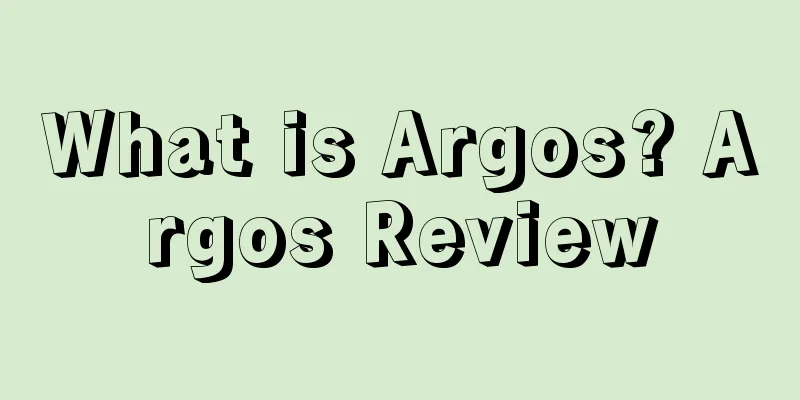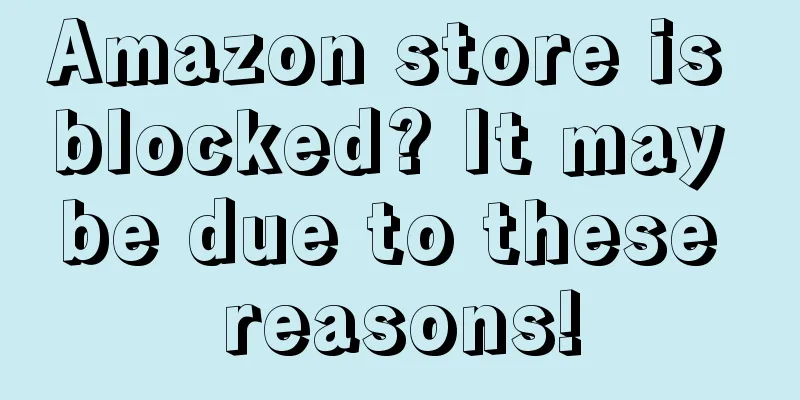What is Argos? Argos Review

|
Argos is a large-scale department store retail chain in the UK. Its main business scope covers hardware and electrical tools, auto parts, sports equipment, furniture, decorative materials, cultural supplies, household appliances, jewelry, handicrafts, photographic equipment, toys, etc. Nature Commodity retailer Foreign name Argos Scale More than 600 branches 17,000 varieties and specifications 1. About Argos Argos is the top-ranked retailer in the UK. It sells almost everything except food, with a total of 17,000 varieties and specifications. In particular, Argos' sales performance in selling toys, small appliances and home electronics, furniture, gold and silver jewelry, and sports and leisure products is considered unmatched by other retailers. Today, Argos has more than 600 stores in the UK and the Republic of Ireland, employs 23,000 people and has 20 million regular customers. It is estimated that more than two-thirds of households in the UK have at least one product purchased from Argos. There is no doubt that Argos is so successful. This is inseparable from its consistent full consideration of customer needs and its integration of supply chain management concepts and awareness into daily management. These business characteristics are mainly reflected in the design of shopping methods, the planning of business products, the optimization of distribution centers and supplier management.
2. Shopping Methods Argos adopted a different business model from traditional retailers when it was founded. It grasped the essence of life in modern British society: more and more people are affluent but have limited leisure time, especially young people who know how to use modern network technology and are easy to accept new ideas, who are its loyal customers. Therefore, in terms of business, Argos embodies its core capabilities in satisfying customers' most convenient shopping methods, providing a variety of styles and high-quality and low-priced goods. This can be seen from its business purpose: We provide the most convenient shopping method and dedicate the most low-cost and high-quality goods and services to customers. Argos provides customers with a variety of communication platforms, allowing them to shop conveniently anytime and anywhere. Customers can choose to go to an Argos store, visit its computer website, send a mobile phone message, or call the 24-hour free service hotline. Multiple shopping channels meet different consumption needs and provide customers with the greatest convenience. Argos' store operations are also completely different from traditional store operations. When you walk into any Argos store, you can't see shelves, let alone products. The products are stored in the back of the store or in the warehouse upstairs. If customers want to shop, they can look through the shopping guides or posters displayed in the store. These materials are readily available in all stores, and customers can take them home to choose slowly. All the products sold are described in these written materials, and are accompanied by product codes and color pictures. Warehouse-style chain stores have many advantages: they can minimize costs, do not require large stores, and do not require many employees to be responsible for sales, which greatly reduces the cost of house rental and human resources. Goods do not need to be placed on shelves, which also avoids possible damage during the circulation of goods. If a customer is interested in purchasing a product, he only needs to follow the steps below. The first step is to check whether the store has the goods you want to buy in stock. This is very simple. There are many small inventory query terminals in the store. Enter the product code and press Enter to find out how much stock the product has. If the query results show that the product is in stock, then take a shopping form in the store, fill in the product code and purchase quantity, go to the counter to queue up and pay, and get a numbered printed receipt. Wait for another counter to call the receipt number, then go to pick up and check the product. If you find that the item is out of stock, you can still come to pay. But before you pay, the staff will tell you that it is out of stock and when it will be available. Usually it will take one or two days. At this time, the customer can decide whether to pay and wait, or give up the purchase. In order to better facilitate customers, Argos stores provide some computers. Customers can pay for the goods by credit card according to the operating instructions, take the automatically printed receipt, and wait for the number to be called to pick up the goods, saving the trouble of queuing to pay. In addition, customers can also place orders through the 24-hour shopping hotline and website, which is not new. However, with these two shopping methods provided by Argos, customers can not only order goods, but also check the inventory, geographical location, price and other information of any Argos store, which makes it very convenient for many people who don't want to go out shopping. Argos has also launched a "Text & Take home" service, which means sending text messages so that customers can learn about the price and inventory of goods anytime and anywhere. From these shopping methods, we can see that Argos has fully considered all aspects of customers and applied a variety of scientific and technological means to meet various personalized consumption methods. This business model, which combines traditional stores with e-commerce business operations, also wins the presence of customers who shop on the street, and combines other shopping methods to maximize the capture of consumer groups.
3. Private label Another surprising thing about Argos is that it can provide customers with a wide variety of products. For example, it sells 22 brands of watches, covering more than 600 styles of high, medium and low-end, including electronic watches, mechanical watches, sports watches, etc. No matter men, women, old or young, everyone can find a watch that satisfies them here. In the UK, businesses usually do not compete by direct price wars. Instead, they generally use different packaging and specifications to avoid a lose-lose situation caused by direct price wars. So what if different packaging or specifications of goods are achieved that are inconsistent with those of other goods, while still ensuring good quality and low prices, and with a variety of styles to choose from? What will be the result? In order to achieve this, Argos focuses on the operation of its own brand products. Argos adopts a strict supplier evaluation system to select product agents or product manufacturers, requiring them to produce and package products according to market demand. The evaluation indicators include specifications, styles, colors, shapes, packaging, etc., and use the Argos trademark. In this way, many of the products sold by Argos cannot be bought exactly the same outside, and it is difficult for customers to make direct price comparisons. This approach achieved three goals at the same time. First, because suppliers could produce and design products according to Argos' requirements, they could provide a variety of styles to meet market demand, and the prices set could also satisfy customers. Second, because Argos set a long-term development strategy with suppliers, their cooperation relationship became closer, and while Argos became the largest retailer, it also increased the market share of these suppliers' goods. Third, it was precisely because of this strategic relationship that suppliers could fully guarantee that the goods they supplied were competitively priced and that Argos's gross profit could be fully guaranteed. Argos' 2004 annual report shows that 59.3% of Argos's value is created by these products. The operation of private brands is also very important in modern food supermarket operations, which is recognized by Lawrence Christensen, supply chain manager of Sainsbury's, a British food chain supermarket. Sainsbury's is the second largest supermarket chain in the UK after TESCO. It has 465 supermarkets and 266 convenience stores in the UK, with annual sales of 1.6 billion pounds. Lawrence revealed that Sainsbury's supermarkets sell about 30,000 products in total, 50% of which are self-branded. He emphasized two points: first, self-branded products have enhanced Sainsbury's brand influence; second, it has improved supply chain management and met the needs of customers, suppliers and Sainsbury.
4. Optimize supply chain management Argos has 1 DC (distribution center) and 4 RDCs (regional distribution centers), which are mainly responsible for the distribution of Argos stores in England and Wales. There are also 2 transfer points, one in the Republic of Ireland and the other in Scotland, which are responsible for the distribution of Argos stores in the Republic of Ireland and Scotland respectively. There are more than 750 suppliers supplying goods to Argos. In the past, these suppliers arranged their own delivery plans and used their own delivery document formats to deliver goods to Argos' distribution center. This resulted in the Argos distribution center receiving goods and different delivery documents at different times, making it impossible to coordinate and arrange them in a unified manner, resulting in low operating efficiency and a waste of manpower and material resources. Argos management soon realized that this would become an increasing challenge as the business grew, so they decided to use UPS's supply chain solution to plan the distribution center process. Under this plan, UPS will provide third-party logistics services for more than 200 suppliers of Argos. First, the UPS electronic program consolidates the delivery orders of several suppliers into one complete order. The UPS collection center receives the deliveries from these suppliers to Argos, puts these goods into a full truck, and then delivers them to each RDC of Argos by UPS. In this way, Argos' suppliers save the trouble of financial contact with Argos, and also save themselves the burden of delivering goods to each RDC of Argos. Argos and all suppliers can check the status of these goods from receipt to delivery at any time through the Internet. Argos can also instruct UPS on delivery time and quantity through the Internet, requesting that Argos' RDC be given priority for delivery, and can track the status of these goods on the road online. Through this plan, Argos has optimized inventory management and controlled inventory costs. So far, 35% of Argos' supplies are delivered by UPS through third-party logistics. In August 2003, Argos made a major decision to entrust the management of its distribution center to a company called Retek Inc. The company implemented an advanced inventory management plan for the distribution center, incorporating UPS and Argos into overall supply chain management and planning, optimizing Argos' inventory, speeding up response time, and improving the management level of the entire supply chain. In terms of supplier management, Argos has also achieved closer cooperation by integrating suppliers to meet the needs of customers. In the early 1990s, two-thirds of the world's famous companies adopted the strategy of reducing the number of suppliers to achieve a more coordinated and closer strategic partnership. However, this high-intensity cooperation can only be maintained within a certain number of supplier systems and is difficult to apply to a large number of supplier systems. Argos has applied this management theory very successfully. Through a strict supplier evaluation system, it develops and taps partners with common market strategies and goals, mutual trust, and the ability to share risks and information. Argos sells 17,000 kinds of goods, but has only about 750 suppliers. By applying modern communication technology, it successfully shares demand information from customers with suppliers, and incorporates customers, retailers and suppliers into the entire supply chain system to design business processes. Argos and its suppliers directly face the needs of customers, fully ensuring that the style, design, specifications, packaging, etc. of the products are more in line with the needs of the market. Unlike traditional enterprises, where purchasing staff take cash or checks to the market to compare prices and find suitable suppliers. This approach will only bring short-term price advantages and lead to very unstable commodity prices, and will not be able to achieve product value-added, and both parties will not be able to gain greater benefits from the cooperation. There is a driving relationship between product production and commodity sales. Simply put, what is produced is sold. Production and sales do not share information together, but are two independent modules that operate separately. Argos has established long-term cooperative relationships with suppliers, adopted modern technology to share market demand information with suppliers, and started to work together from the design of products. There is a pull relationship between the sales of goods and the production of products. Simply put, it sells what is needed. Production and sales are closely linked into a whole, which is of course more in line with the business needs of modern enterprises than the push relationship mentioned above. This management philosophy of Argos is also reflected in TESCO, the No. 1 food supermarket chain in the UK. TESCO has an annual sales volume of more than 3 billion euros, more than 600 stores in the UK, and 40,000 kinds of goods, mainly supplied by more than 2,000 suppliers. It also integrates suppliers, establishes long-term cooperative relationships, shares market information, optimizes supply chain management, and enhances competitiveness. This shows that it is this long-term strategic partnership between retailers and suppliers, through sharing market information and jointly facing customer needs, that has enabled both parties to achieve a win-win situation in modern commercial competition.
5. AiGu Mall Argos launched a comprehensive online mall for the Chinese market - AiGu Mall, which officially entered the market on October 25, 2012. It provides home delivery services, a 24-hour customer service hotline center, and fixed-point offline services: including independent physical stores, product pick-up points, etc. Consumers can purchase a wide range of high-quality products anytime and anywhere through online platforms and mobile platforms; a variety of domestic, international and AiGu exclusive high-end brands. Consumers can get them all at the touch of a finger. Aigu Mall's maiden voyage in China is undoubtedly an important step in its long-term development strategy in China. In 2011, Aigu Mall's parent company Home Retail Group and its partner Haier Group formed a joint venture to pave the way for Aigu Mall's development in the Chinese market. With its headquarters in Shanghai as its strategic core, Aigu Mall's retail channels have covered Shanghai and three surrounding provinces, including Jiangsu, Zhejiang and Anhui. While providing online shopping and product delivery, Aigu Mall has also established unique product pick-up points to provide consumers with a fast delivery service of ordering on the same day and picking up on the same day. Consumers can get the most convenient ordering service among the dazzling product selection. It is reported that Aigu Mall will continue to expand the number of product pick-up points and launch physical stores before the end of 2013. Committed to the vision of "convenience, affordability and multiple choices", Aigu Mall will continue to bring customers a wealth of shopping choices and a constantly improving shopping experience. With the launch of the online platform, Aigu Mall will provide consumers with ten categories of catalog products, more than 100 domestic and international brands and more than 1,000 high-quality products, and strongly launch three major categories of products such as home furnishings, furniture, toys and electronic products, as well as unique online brand areas, such as the LEGO store; in addition to providing a variety of mass and high-end domestic and foreign products and brands, Aigu Mall will also gradually launch its own brands, including Chad Valley brand children's toys and Colour MATCh brand high-end home products. In addition to a wide variety of products and brands, AiGu Mall not only provides a complete consumer experience, but also attaches great importance to establishing high-quality consumer services, which is the cornerstone of the brand. Goods purchased online can be quickly delivered to customers' homes, or they can choose to pick them up at the nearest product pickup point. AiGu Mall has set up a 24-hour hotline center to provide consumers with shopping guidance and product information, collect consumer suggestions, and provide after-sales service. In addition, a variety of clubs will be presented in the near future, where consumers can enjoy personalized shopping suggestions, rich product information and additional promotional offers. Argos announced its withdrawal from the Chinese market. It has been less than three months since Haier and the British e-commerce brand officially opened and operated websites and physical stores. Haier Group issued a statement on its official website, saying that the termination of the cooperation was due to the British investor Home Retail Group (hereinafter referred to as "HRG")'s decision to withdraw from the Chinese business due to strategic adjustments. Haier Electric respects the other party's choice and reached an agreement with the other party to voluntarily liquidate the existing business in accordance with relevant regulations. References
|
<<: What is Klear? Klear Review
>>: What is Khoros? Khoros Review
Recommend
What is Kmart? Kmart Review
Kmart is the largest discount retailer in the Unit...
What is BSI? BSI Review
BSI, the British Standards Institution, is the wor...
Follow-up to Yiwu freight forwarder's bankruptcy! More than 100 sellers complained in tears and needed to pay a huge amount to redeem the goods!
Some time ago, a piece of news about "Yiwu fr...
What is Kunhong Study Club? Review of Kunhong Study Club
Kunhong Research Institute provides professional S...
What is QuanQiTong? QuanQiTong Review
Quanqiutong (Guangzhou Quanqiutong Logistics Suppl...
What is Better Coupon Box? Better Coupon Box Review
Better Coupon Box is a great tool for retaining vi...
What is TOMTOP? TOMTOP Review
TOMTOP (Shenzhen Tongtuo Technology Co., Ltd.) was...
What is Tradeindia? Tradeindia Review
Tradeindia was founded in 1996 and is one of India...
What is LifestyleMirror? LifestyleMirror Review
LifestyleMirror is a website that uses a network p...
What is Talkwalker? Talkwalker Review
Talkwalker is a social media tracking and analysis...
What is BuzzStream? BuzzStream Review
BuzzStream is a link building SEO tool that enable...
Using Google Shopping to expand e-commerce business series ③: How to set up Merchant Center
Google Shopping ads are displayed as organic list...
What is Cross-border Eye? Cross-border Eye Review
Cross-border Eye is a comprehensive service platfo...
The most complete mind map of Amazon backend operations in history
What I share today is a mind map of Amazon advert...
It’s really sad! Sellers’ shipments keep disappearing, and Amazon responds like this…
Do you think the most important thing for Amazon s...









